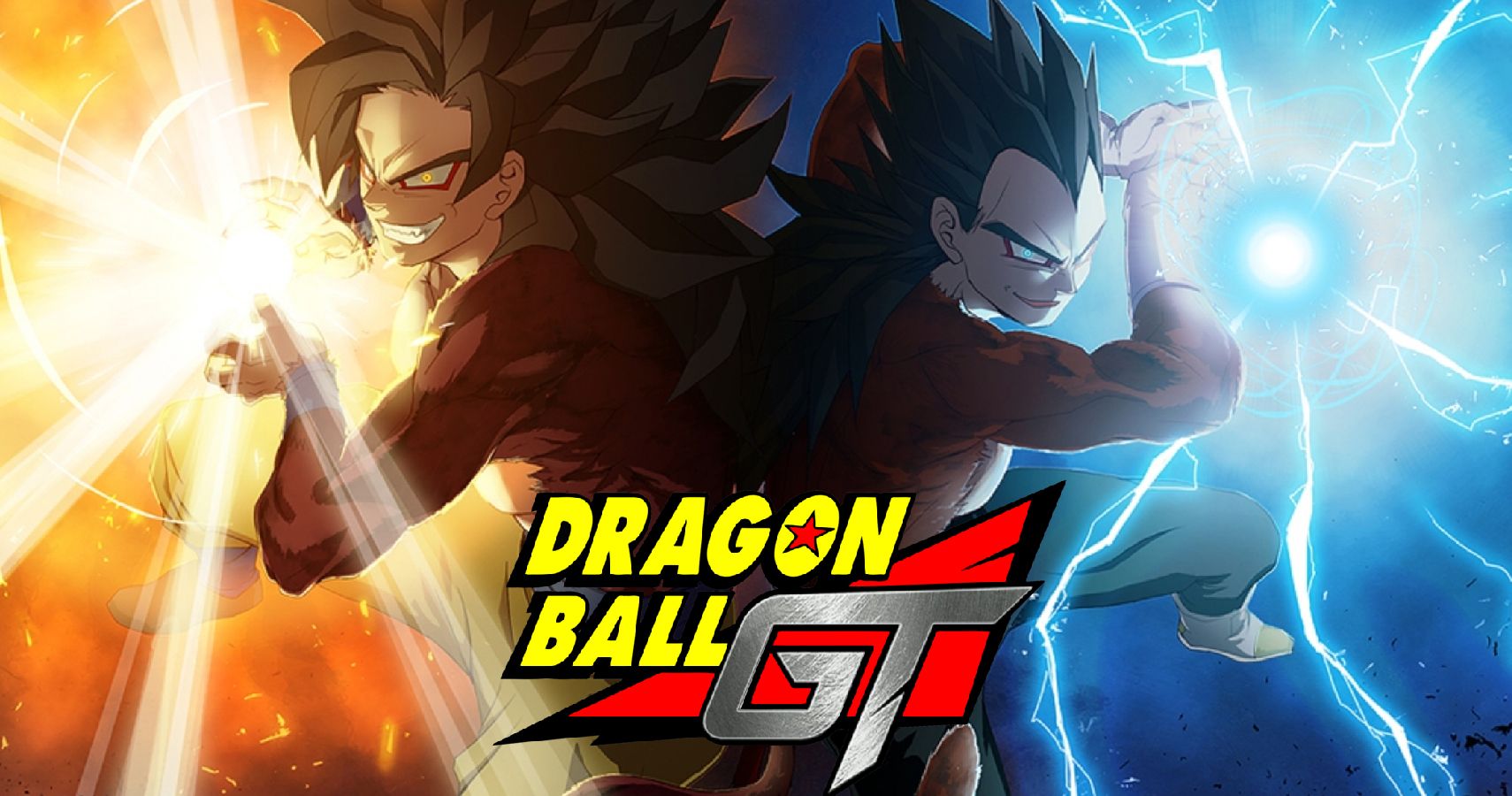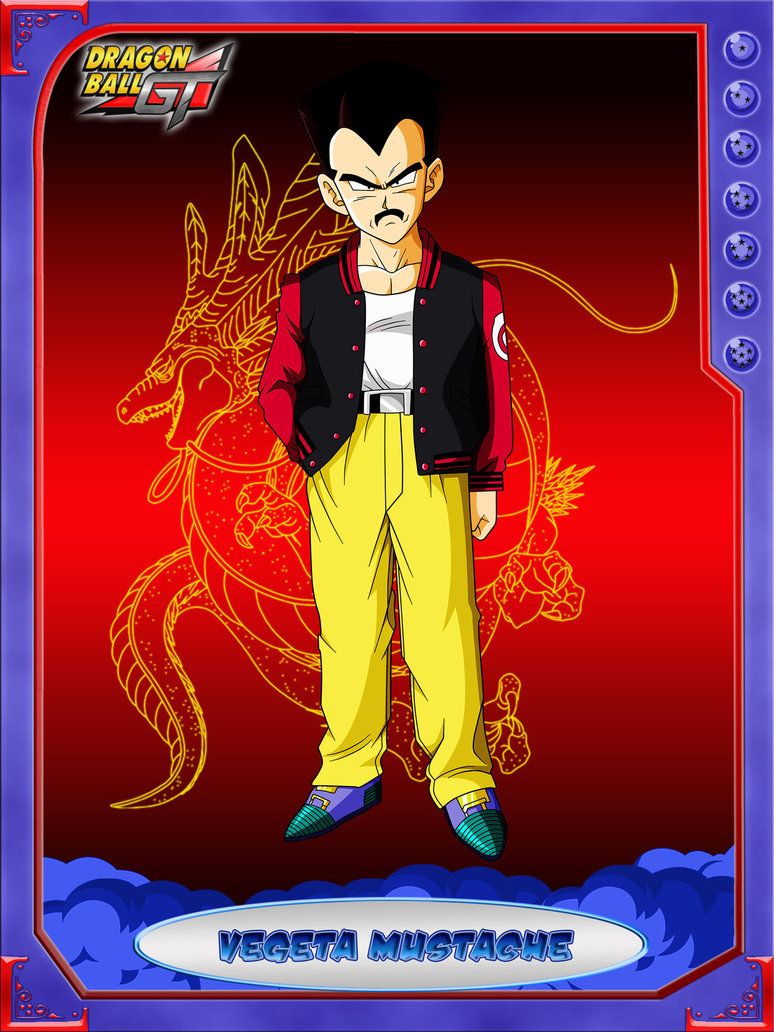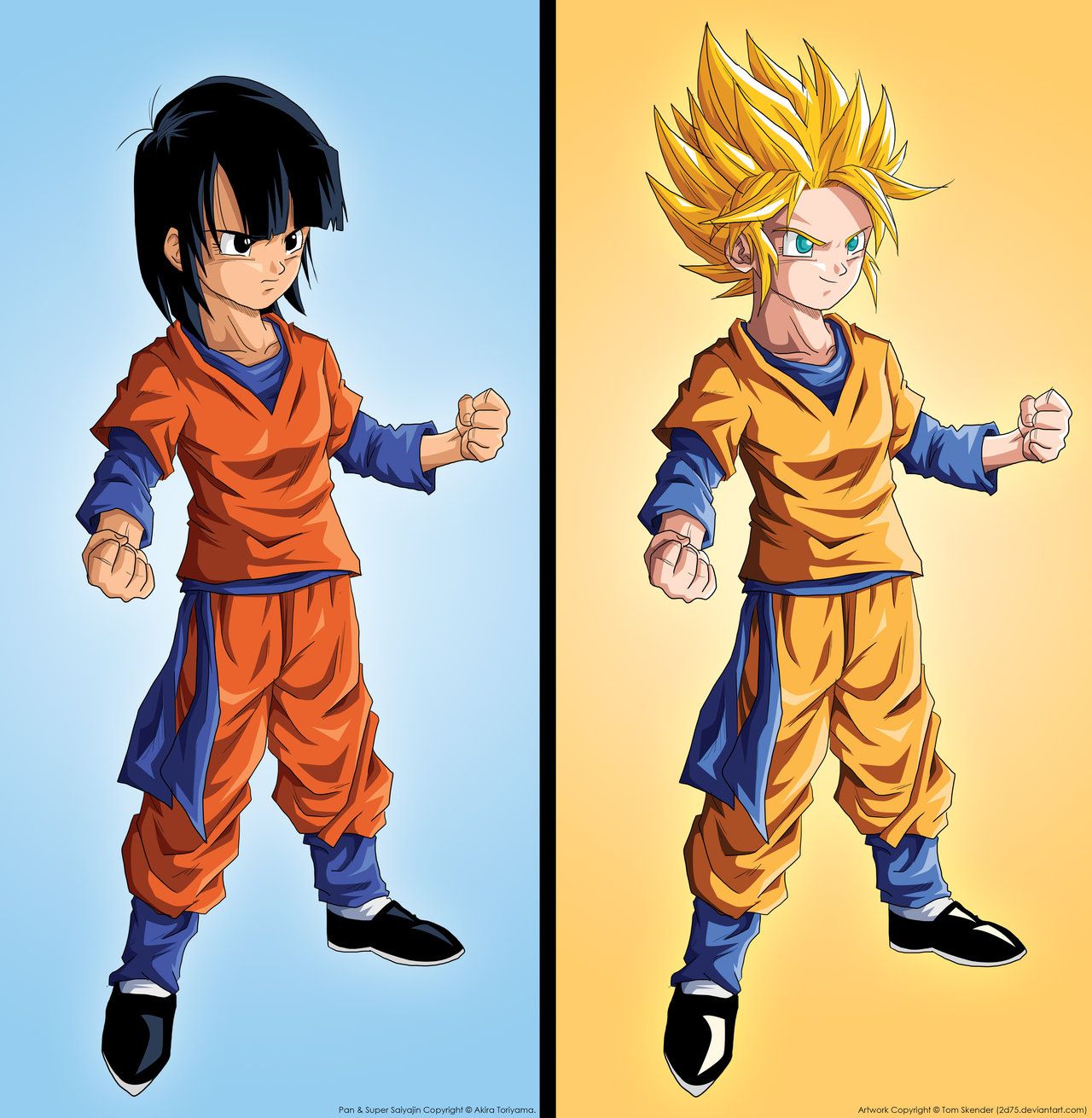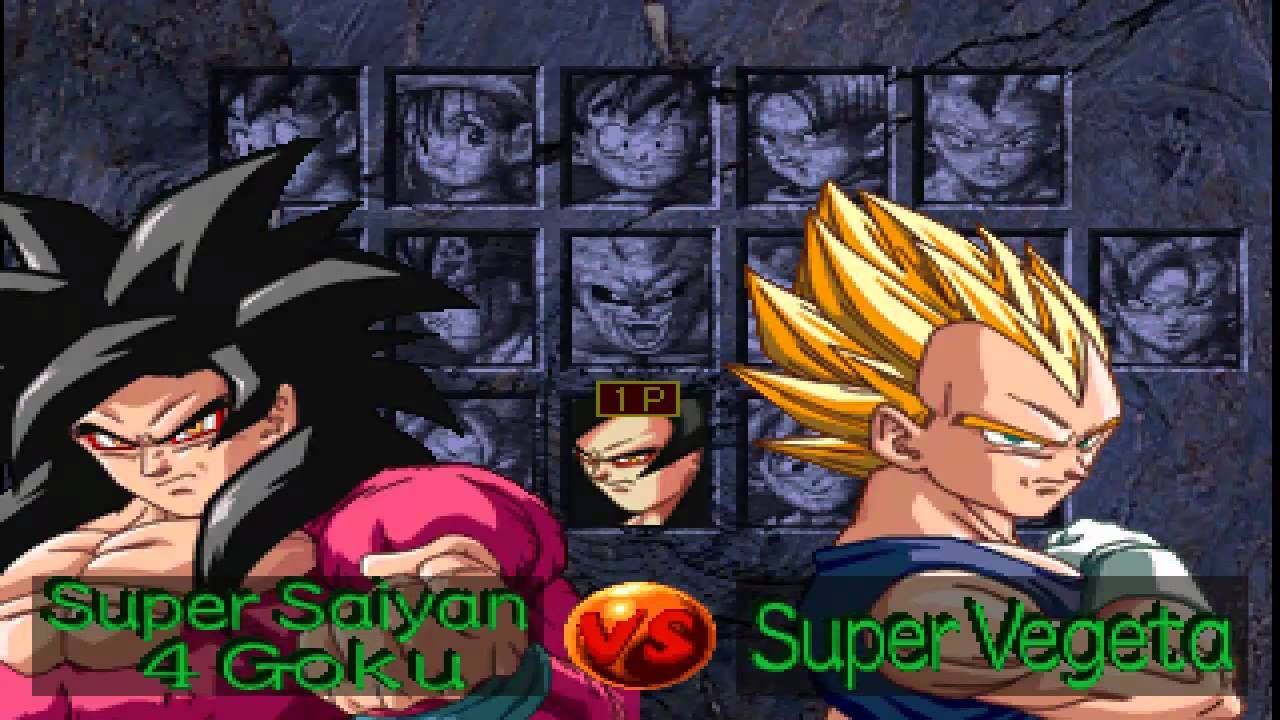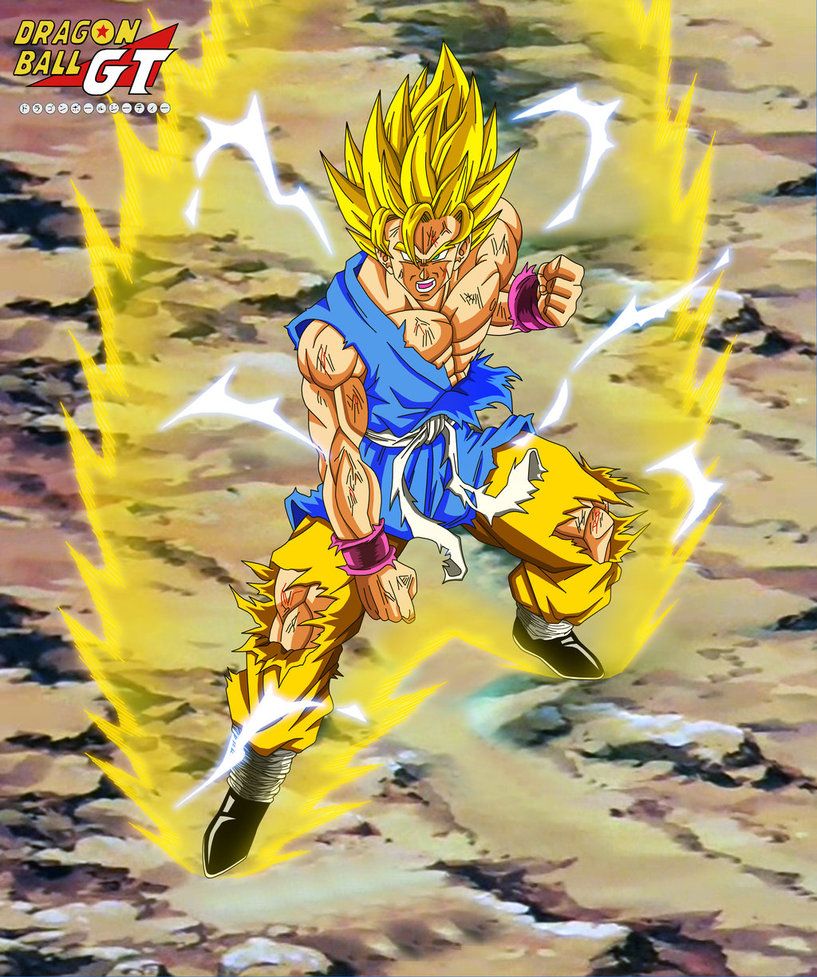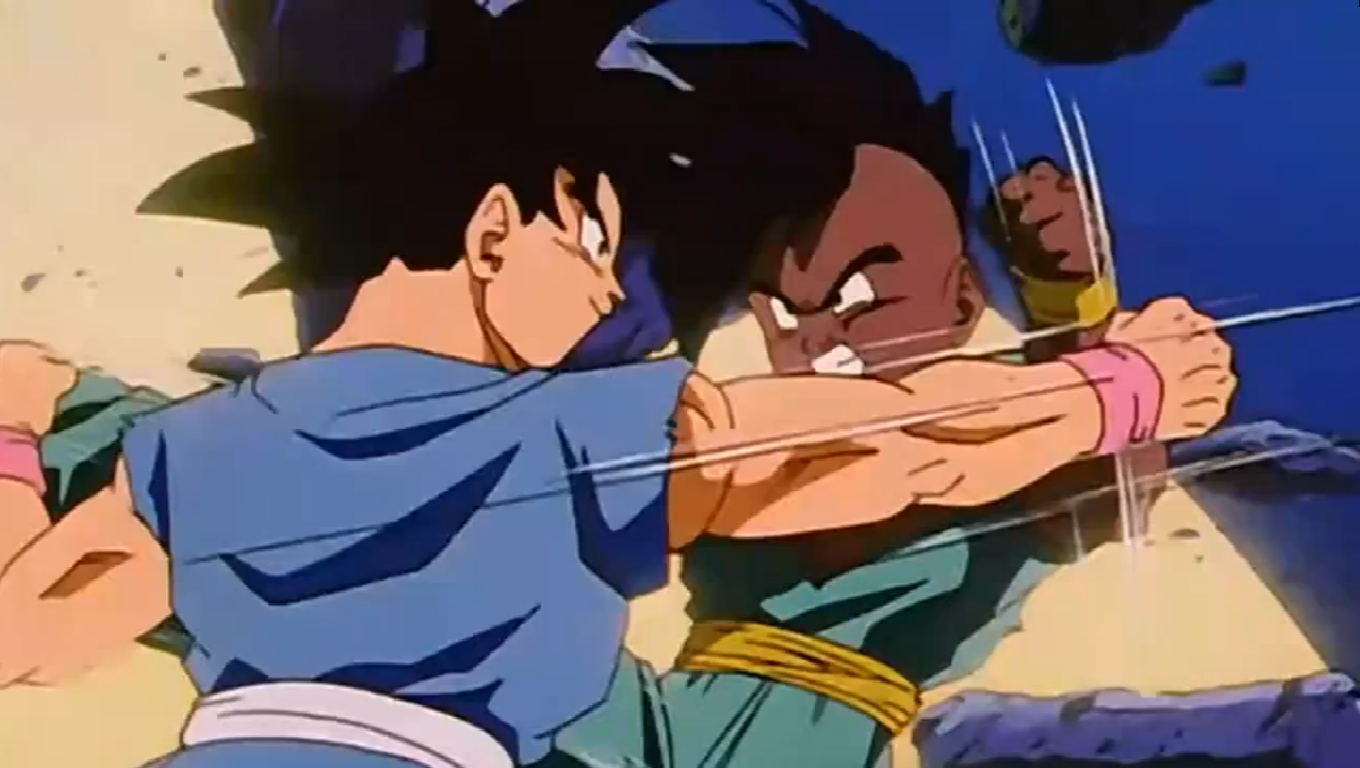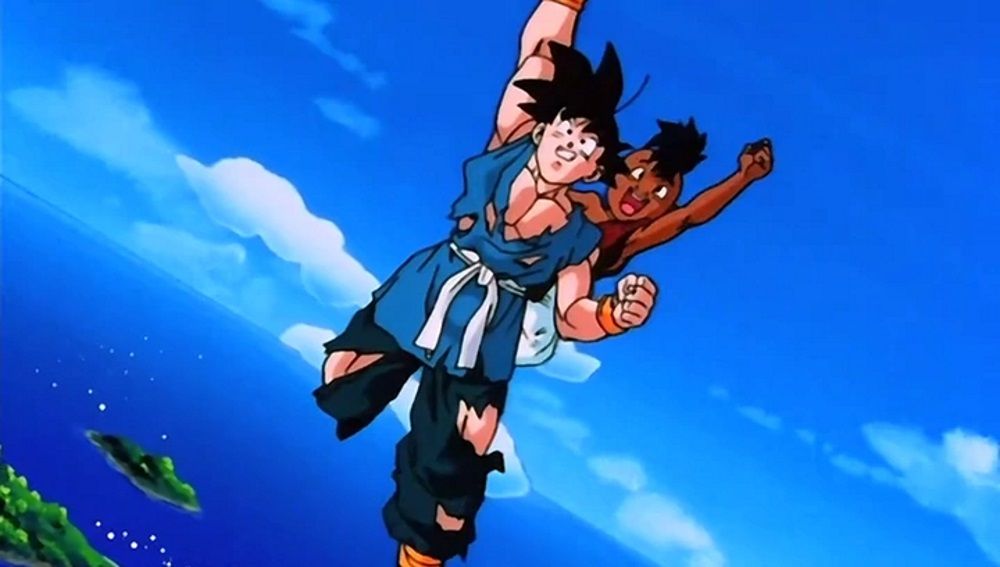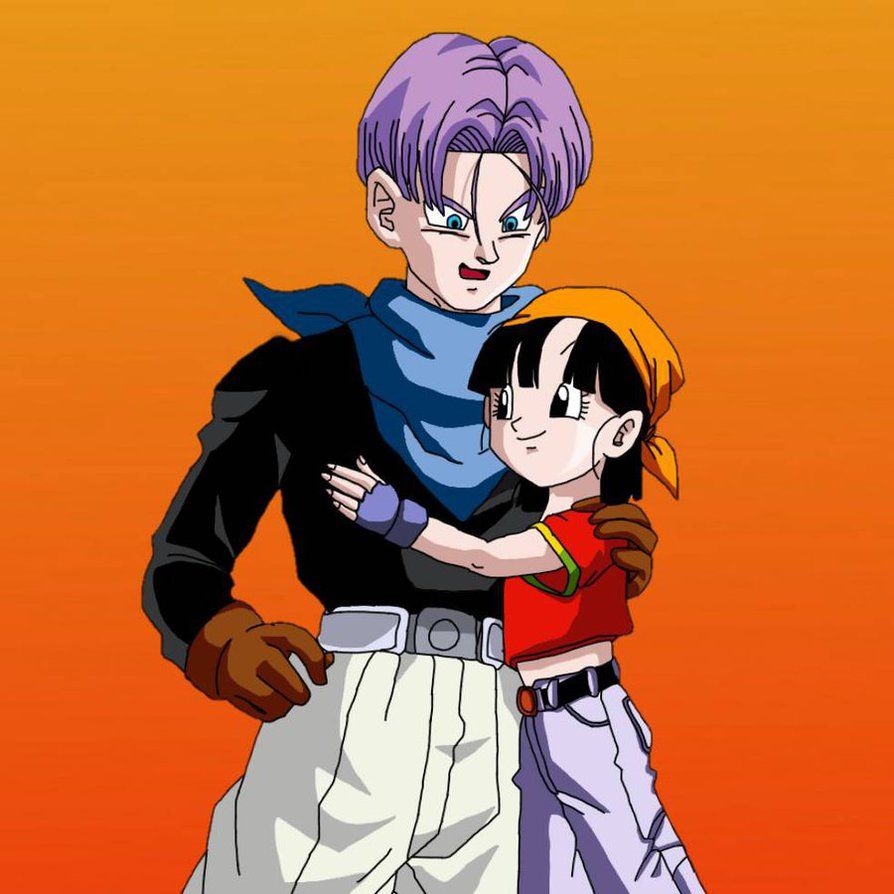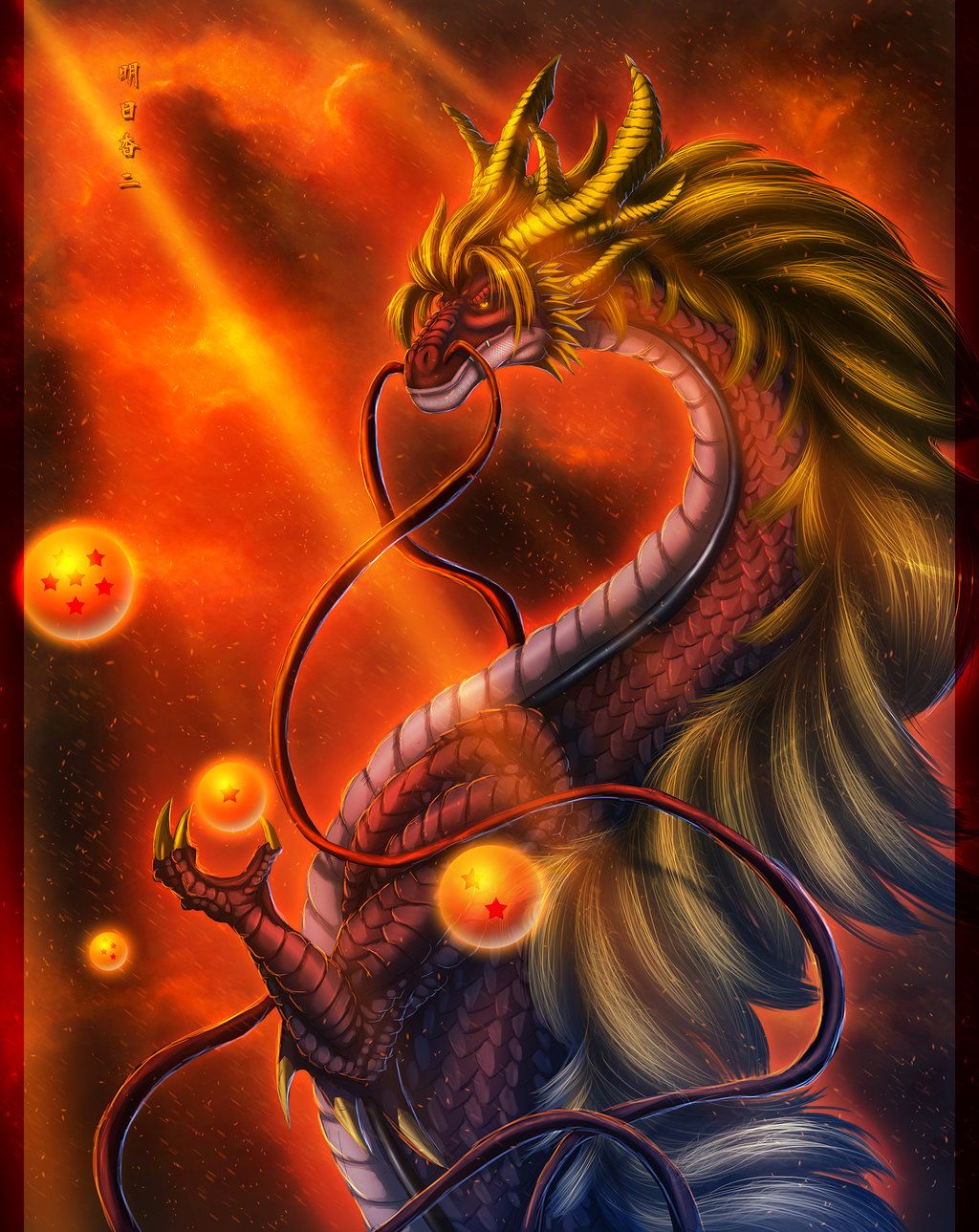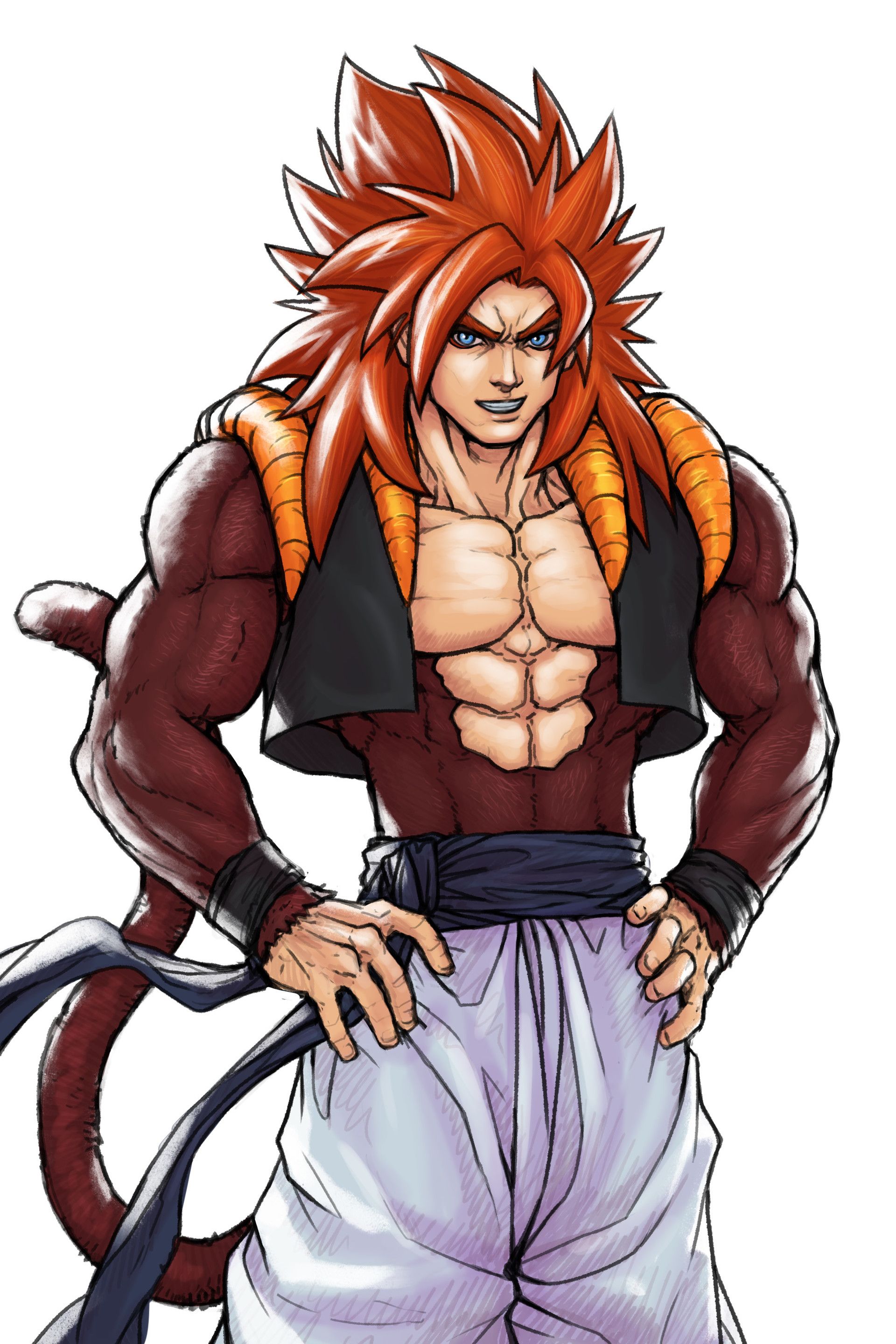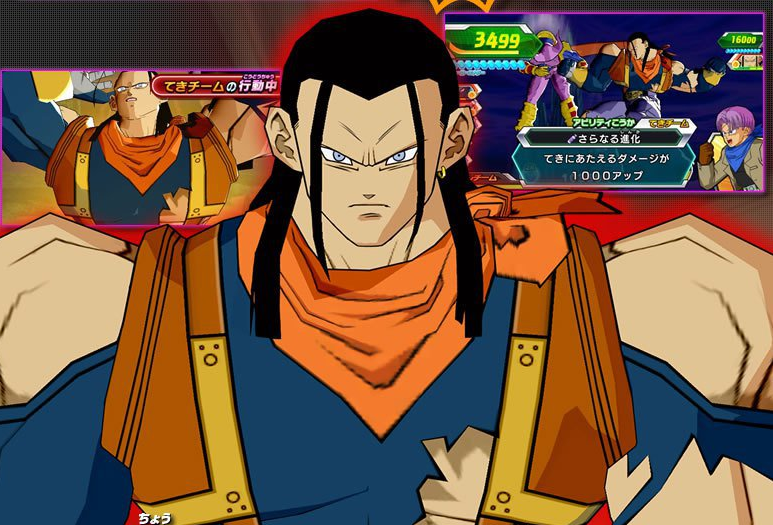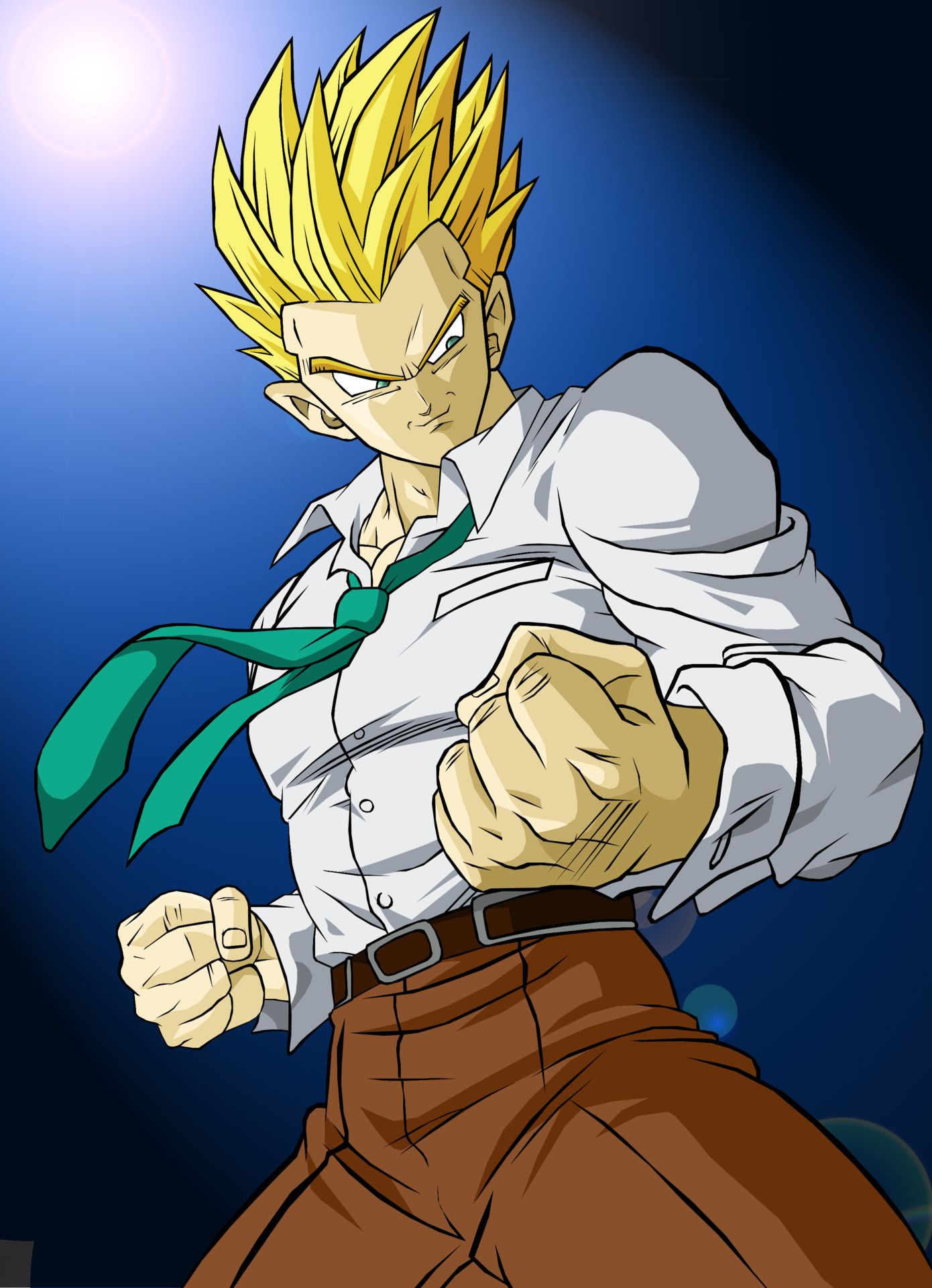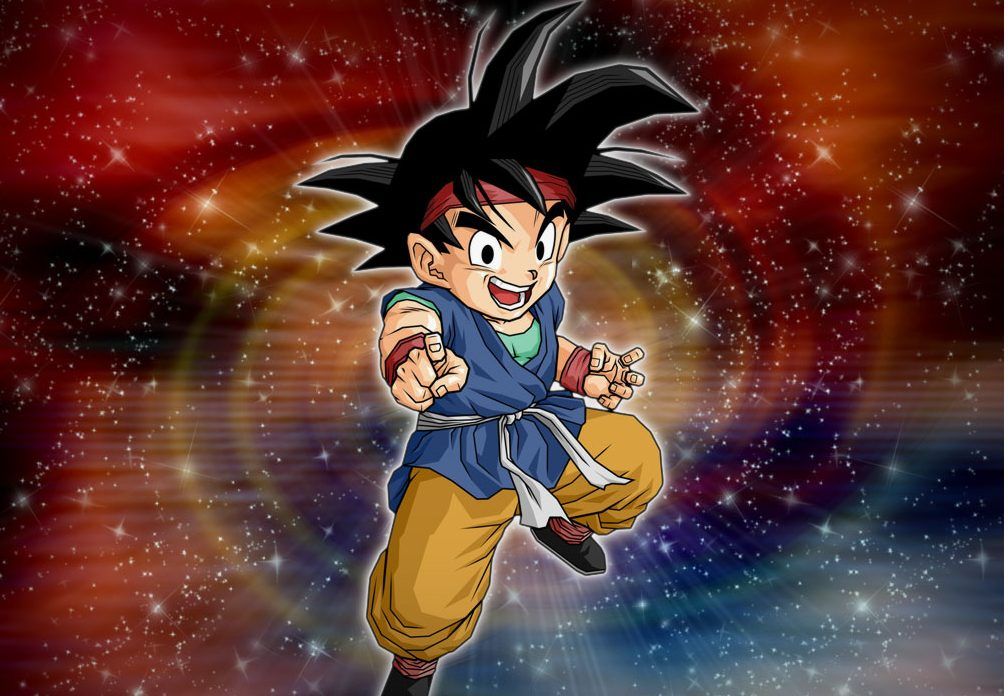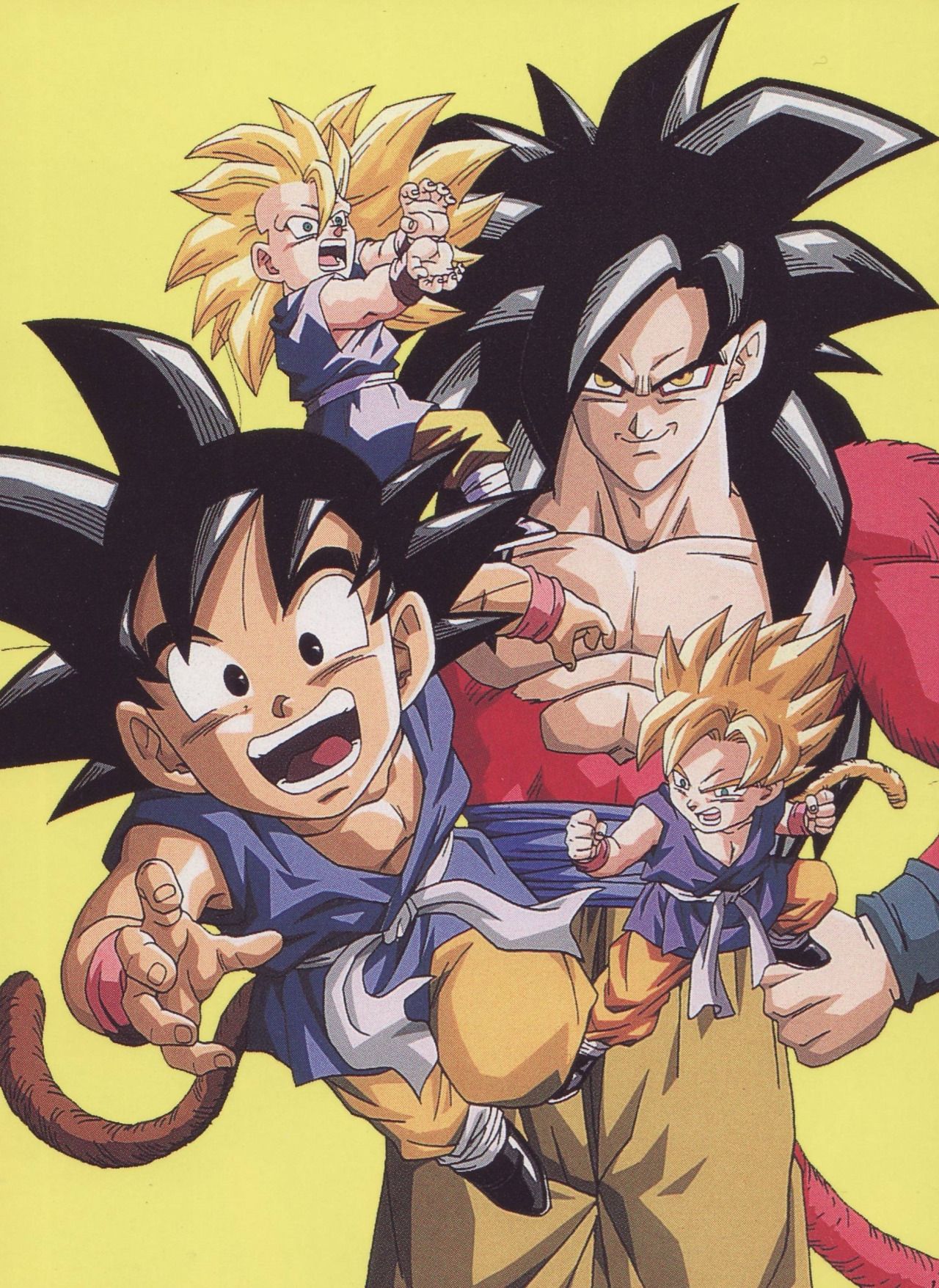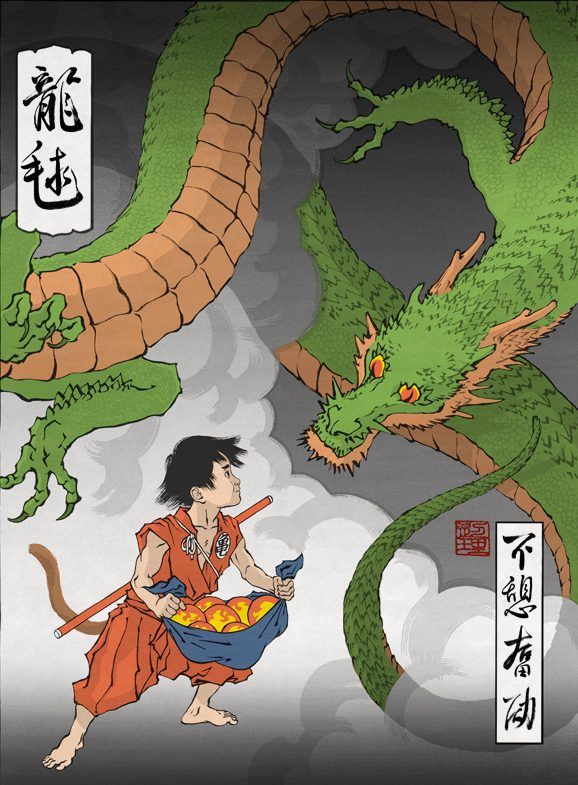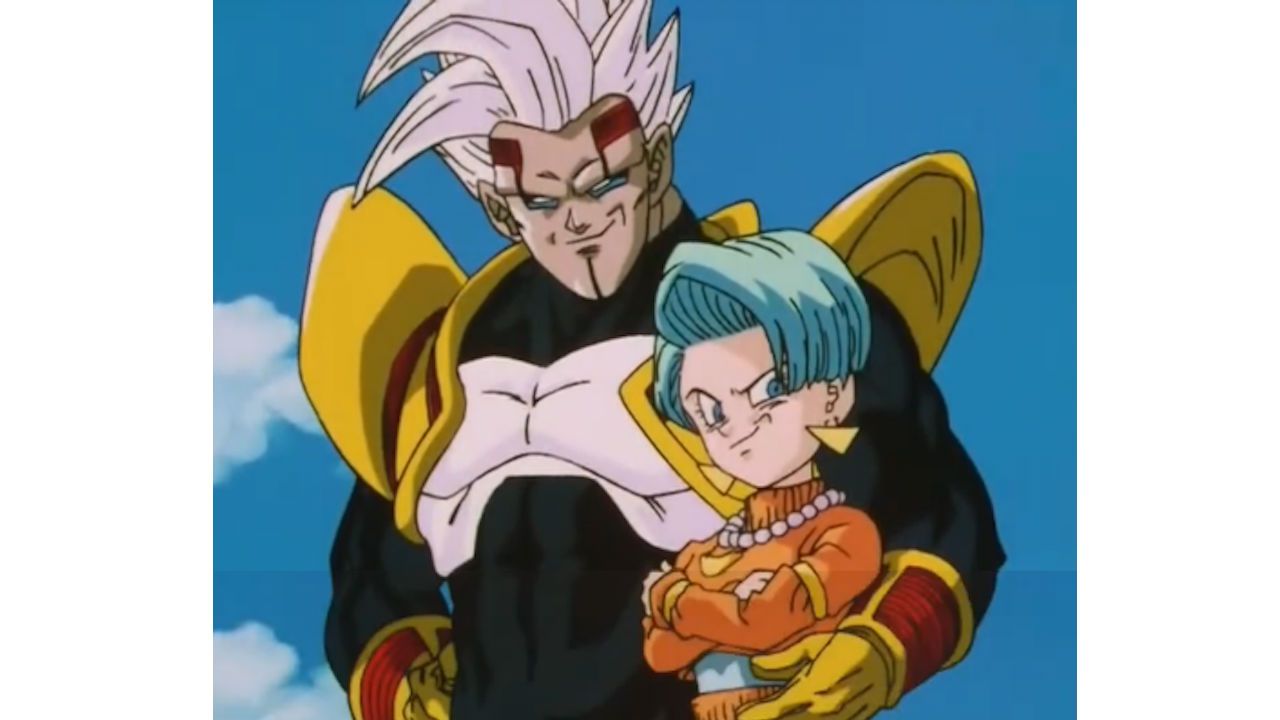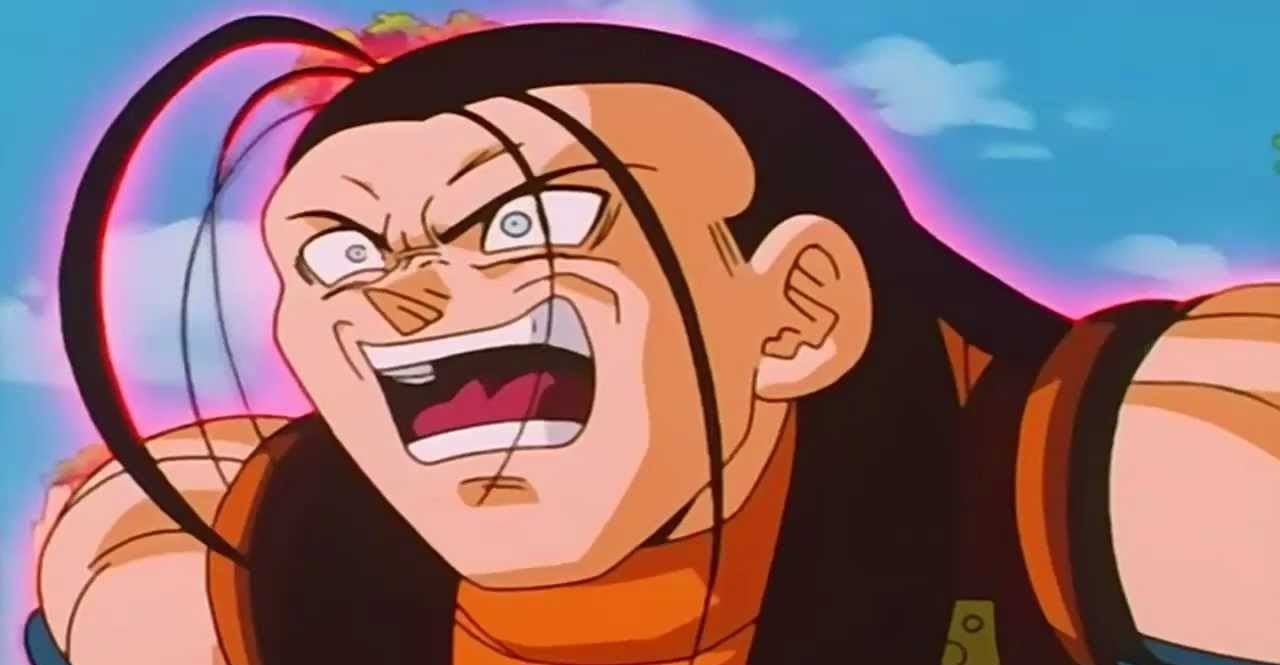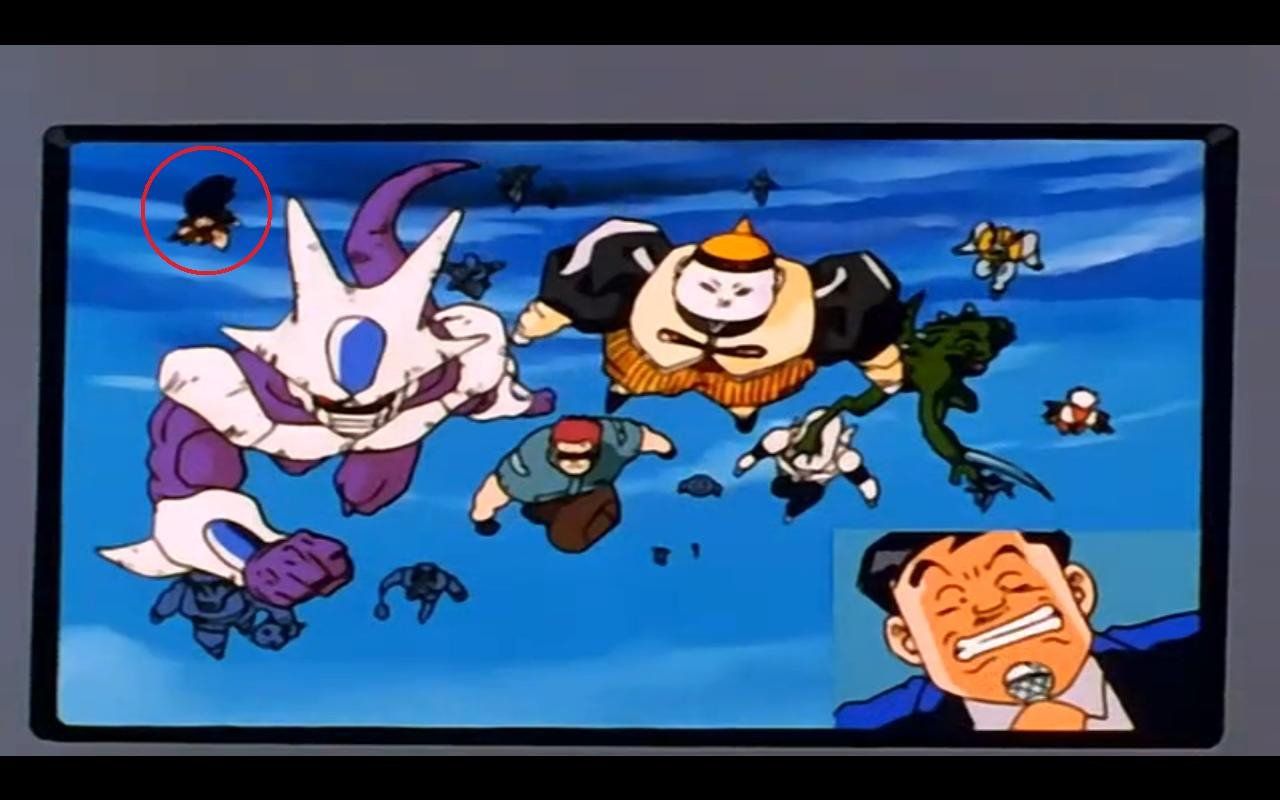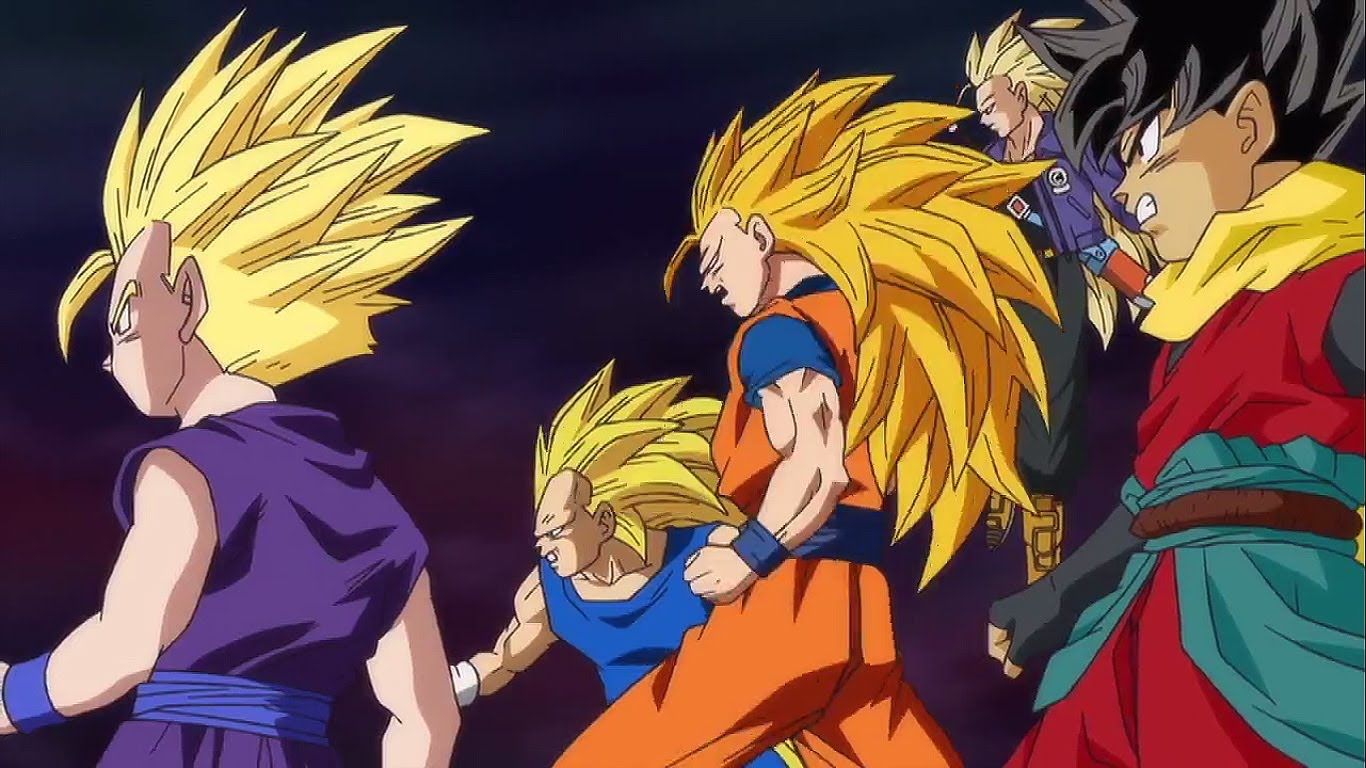Step into the Grand Tour, a brand new series begins, some more money for Toei and their friends. DBZ was going strong, but Toriyama stopped it with Buu. What exactly is Toei supposed to do? If you’ve been lucky enough to have never heard of the series, Dragon Ball GT is the anime only sequel to the massively popular Dragon Ball franchise. Upon getting the news that Toriyama would be ending the manga at the end of the Buu arc, Toei decided they were going to milk the Goku train just a bit longer by spinning off into an all new series.
Notorious for its (lack of) quality, Dragon Ball GT has evolved into a series non-grata within the franchise. Most fans consider is totally skippable, others refuse to admit it exists. You may even stumbleupon hardcore super fans of the series who actually fell asleep watching episodes of GT. Time has been kind to GT, though, and the onset of Super has given us all cause to look back and reevaluate it anew.
Spoilers: It’s still not great, but what is great is all the behind the scene information that’s recently come to life. GT may not have aged particularly well, but it’s, by far, the most interesting series in the franchise.
20 Toriyama Is Responsible For Mustache Vegeta
The GT redesigns are often cited as one of the series’ worst aspects. Goku went from a grown man to a little kid, Goten was completely unrecognizable, Pan and Bra looked far too old for their age, and, perhaps worst of all, Vegeta grew a gaudy mustache and got a haphazard haircut. While these redesigns are used as fire against the GT staff, the bizarre truth is that they don’t deserve the flack. These designs were sanctioned by none other than Akira Toriyama, himself.
If anything, the GT staff handled Vegeta’s mustache with grace by very quickly sidelining him and bringing him back clean shaven during the Baby arc. While it is nice that Toriyama decided to do the redesigns for the cast, there is an undeniable disconnect between the Z and GT designs. In hindsight, Toriyama’s minimal involvement was probably for the best. His growing weariness for the series can be plainly seen in Vegeta’s stache.
19 Pan Was Held Back
Pan never going Super Saiyan is one of GT’s more prominent wasted opportunities. While it likely would have still been frustrating, Pan’s lack of a transformation wouldn’t have been nearly as bad if she wasn’t the show’s co-lead. She’s second only to Goku in importance, but she hardly gets the chance to save the day or be a legitimate heroine. You could say this is because of GT’s desire to keep Goku front and center, but the actual reason is more insidious.
Pan was deliberately held back by the writing staff so she could fulfill the role of a damsel in distress. Why did they feel this was appropriate? Simple, they believed Goku couldn’t be a hero unless he had Pan to save. Pan, a character who needed development and was built up at the end of Z, was sidelined so that Goku, a fully developed character who didn’t care about being a hero, would have a reason to be a hero.
18 Final Bout Was America’s First Exposure To GT
You never forget your first and, for many western fans of the series, their first was the unfortunate Playstation fighting game, Final Bout. Part of the long running, (then) Japanese exclusive Butouden series, Final Bout was basically a “Greatest Hits” fighter with the series’ most prominent character. Nevermind the fact neither Dragon Ball nor Z had remotely finished airing in the west, the game also featured a wide array of GT characters.
For far too many people, GT was the gateway to Dragon Ball. Not just GT though, Final Bout. It’s unfortunate enough being introduced to the series through GT, but Final Bout is one of the worst games to grace the franchise. Ugly, clunky, and slow should never be the first three things associated with the series, but that’s the impression you get if all you know is FB.
17 GT Technically Isn’t Non-Canon
Believe it or not, there is absolutely nothing stating that GT is non-canon. In fact, there’s nothing explicitly stating what is canon in the franchise. Neither Toriyama nor Toei have come out to elaborate on what the “official” story is. The most we’ve heard in regards to GT is that Toriyama considers it to be a side-story to the original series. While the advent of Super may be enough for you to deduce that Dragon Ball GT probably isn’t canon, that’s only an assumption. An educated one with plenty of evidence to back it up, yes, but an assumption nonetheless. Not only is GT not non-canon, however, it connects more intimately with the Z anime than Super does. Super may be following the source material more closely, but there’s one thing GT will always have that Super won’t.
16 GT Is Still The “Official” Sequel To Dragon Ball Z
That’s right, GT is more “official” as a sequel to Z than Super is. You’re probably wondering, “how can this be?” You’re not wrong to, either. Toriyama wrote nothing for GT and the series is filled with plot hole after plot hole. It only makes sense that the anime penned by Toriyama, that actually follows the manga, is the series’ true sequel. That does make sense, but GT is part of Z’s anime continuity whether you like it or not, and that makes it official. Dragon Ball GT works on very consistently inconsistent logic only found in the Z anime. Not only that, GT looks like Z and a fair amount of the staff carried over into the series. More important than anything, however, GT is as direct a direct sequel can get.
15 There Was No Break Between Z And GT
In Japan, there was absolutely no break between the airing of the last episode of Z and the first episode of GT. One week, Goku was flying off to train Uub. The next, Goku was wished back into the body of a child. In that sense, GT is the same kind of sequel Z was to Dragon Ball. Which is not a sequel at all, honestly. Dragon Ball and DBZ were serialized as one large manga called Dragon Ball. Z only came into fruition because Toriyama’s editor was displeased with the tone of the original anime. Once Dragon Ball ended, Z came along one week later. A fate GT would share.
Does this make GT an official part of the story? Well, yes. For the anime, at least. The manga continuity cuts off at Uub and that’s that. The Z anime ending, on the other hand, was written with GT in mind. It adapted the manga chapter, but it was never planned by the staff to be the definitive end.
14 A Lot Of Thought Went Into Pairing Trunks And Pan With Goku
Why, of all people, were Trunks and Pan paired up with Goku for GT’s preliminary arc? Pan makes sense to some degree as she was a new character who was introduced in the last few episodes of Z, but Trunks was never had a deep connection with Goku after the Android arc. At first glance, this is a seemingly random combination that gives little regard to character chemistry. Once you look into it, however, it’s probably the most thought out aspects that went into Dragon Ball GT.
Trunks and Pan both play important roles in how they relate to Goku as characters and archetypes. Trunks fulfills the Bulma criteria from early DB by being a smart, tech-savvy Brief who also acts as the straight man. Pan, as mentioned previously, gives us someone for Goku to save while adding some femininity to the trio. Pan’s immaturity would also play off of Trunks’ down to earth nature and Goku’s naivety to create a classic comedy trio.
13 The Staff Decided To Drop The Black Star Arc Almost Immediately
There’s quite a bit of speculation that goes into GT’s first arc. Why did it end so quickly? Were ratings plummeting? Was fan outcry so loud the staff had to shift gears into Baby? Well, neither, really. The truth is, Toei decided to drop the Black Star arc almost as soon as they begin. Just a few episodes in, the writing staff realized they couldn’t make a full series out of three characters collecting seven Dragon Balls across the universe over the course of a year. There was no fan or ratings push for the shift, Toei simply recognized how difficult it would be to drag out their initial concept of a “Grand Tour,” and appropriately introduced Baby to menace our heroes, and the audience, for 23 episodes.
12 GT Took A Lot Of Breaks
While it took 23 episodes for the Baby arc to start and finish, it did not take 23 weeks for it to all air. For some reason, Dragon Ball GT took several breaks during its initial run. During the Baby arc’s run from June 1996 to March 1997, there was not a single month during 1996 where an episode aired every week. This was a trend that would continue into the Super 17 and Shadow Dragons arcs. One of the largest gaps being the month between the first and second episode of the former arc. The Shadow Dragon arc was less obnoxious overall, but it still managed to delay Gogeta’s appearance for over a month.
11 17 Was Cut From The Final Battle
If you’re one of three people on this planet who felt that GT’s final battle was in desperate need of an Android 17 cameo, then your feelings are about to be validated! During the penning of the series finale, 17 was going to be included in a quick scene donating energy to Goku’s universal Genki Dama. Likely due to time constraints and the fact he just finished co-starring in GT’s worst story arc, Toei ended up leaving 17 on the cutting room floor. Funny enough, this nicely parallels 17’s inclusion at the end of the Boo arc.
In the manga, 17 is seen donating energy to Goku’s Genki Dama in a quick panel. Originally, however, Toriyama planned for that panel to include Lunch, not 17. For whatever reason, though, Toriyama felt it more appropriate to toss 17 into the mix. Unfortunately for him, karma came running for him and made sure he wouldn’t feature in GT’s closer.
10 A Gohan Subplot Was Written
GT is commonly referred to standing for “Goku Time,” and for good reason. In the series’ entire 64 episode run, there is not a single moment where another character truly feels in control or the narrative. Goku isn’t the only character who gets fights but, far too often, he’s the only one who gets fights that matter. Sadly, it didn’t have to be this way as Toei did envision arcs for other characters. In particular, Gohan.
At some point after the Baby arc, Gohan would find himself resolving to get back in action and hone his body once more. This small subplot would have seen someone close to Gohan getting injured and him cooly going off to fight backdropped by Chichi’s protests. His small plot would be given roughly two episodes but, in a 64 episode anime, that’s a fair shake. Unfortunately, Gohan’s plot never came to fruition and GT remained “Goku Time.”
9 The GT Staff Did Not Understand Piccolo
While Gohan gets it rough, no one in GT gets served a worse hand than the former Demon King himself, Piccolo. Bafflingly, after adapting the character for for over 300 episodes, the GT’s staff did not understand Piccolo whatsoever. The reason he didn’t appear more was because they considered him a character only in relation to Gohan. Completely disregarding the rivalry Goku and Piccolo share for two arcs, the fact Piccolo’s arc during the Namek arc parallels Goku’s, or even Piccolo finally merging with Kami to complete his series long story arc, the GT staff decided Piccolo could only exist as a support to Gohan. It’s not just disrespectful to one of the series’ finest characters, it’s downright incorrect.
8 The GT Special Was Made During The Series
Dragon Ball GT: A Hero’s Legacy is a TV special that acts as an epilogue for the franchise, taking place 100 years after the end of GT. Despite explicitly taking place after the end of the series, it was not written after the end of GT, which makes its placement and existence a bit awkward to say the least.
After the end of the Baby arc, we suddenly flash forward 100 years into the future to follow the adventures of Goku Junior, a coward with none of Goku’s charm. He goes on an adventure, learns humility, and goes Super Saiyan. It’s boring. Worst of all, it’s just awkwardly placed. The Super 17 arc follows the special and we don’t check up with a Goku Junior again until the final episode where he squares off against Vegeta Junior. Now that would have been an interesting, and appropriate, special.
7 The Not So “Lost Episodes”
There are two answers to the question “what are the lost episodes?” The first, the initial sixteen episodes of Dragon Ball GT. The second, the smartest thing Funimation has ever done. Basically, Funimation’s original run of GT skipped ahead to the start of the Baby arc since the first sixteen episodes are more tonally in-line with the original Dragon Ball than the significantly more popular Z. Funi deemed those missing episodes as “Lose Episodes” and made fans yearn for a portion of the series they were convinced they didn’t want. After GT finished airing, Funimation rereleased the seemingly Lost Episodes and conned everyone into wanting to watch Kid Goku hangout in outer space with Pan and “Definitely Not Future” Trunks.
6 GT Came From A Desire To Go Back To The Series’ Roots
Dragon Ball, from as early as the King Piccolo arc, had been making efforts at amplifying the drama. The arc killed Krillin and Roshi. The one that followed pushed Goku to his absolute limits. The start of Z killed off most of the supporting cast. The series had been ramping up more and more with every arc that when it came time for Toei to start GT, they decided to take a step back and bring back the pre-Piccolo feel.
While Toei ended up scrapping their lighthearted space adventures early on, they did initially commit to the concept of a lighter franchise. They planned for 26 episodes of easy going adventuring which, while never fully realized, you can see clearly in the first few episodes. It isn’t exactly graceful, but those early, “Lost Episodes,” do bring us back to the series’ long forgotten roots.
5 Baby Wasn’t A New Concept
True or False: a Tuffle scientist creating a life form to enact revenge on the sole survivors of the Saiyan race is an original concept. If you answered true, you clearly didn’t read the title of this entry and I’m concerned for you but, more importantly, you need to educate yourself on a little old school animation called Plan to Eradicate the Saiyans.
Originally a Famicom game that became a Playdia game/movie hybrid, Plan to Eradicate the Saiyans followed the story of a Tuffle scientist creating a life form to enact revenge on the sole survivors of the Saiyan race. Sound familiar? It should, because you literally just read it. Are you feeling alright? Yes, surprisingly enough, GT’s signature arc isn’t all that conceptually unique. Though that isn’t necessarily a bad thing. Needless to say, the Playdia game was rather forgettable so the concept deserved a second chance unlike another derivative arc...
4 The Super 17 Saga Wasn’t A New Concept Either
Super 17 is not a good story arc, but the worst part about it is that it should be a good story arc considering it shamelessly rips its premise off one of the best Dragon Ball Z films: Fusion Reborn. The 12th movie in the Z series, Fusion Reborn follows our heroes trying to stop the denizens of Hell leaking out and wreaking havoc on Earth. Instead of an irrelevant side villain being the main antagonist, though, the main villain is an incredibly creative and colorful Majin Buu-esque monster who pushes Goku and Vegeta into fusing to stop him. It’s a wonderfully animated movie with some of the best art direction in the series and one of the more fun storylines. Basically nothing like Super 17.
3 GT’s Plot Makes Zero Sense
Dragon Ball GT’s plot is, for a lack of a better word, dumb. Goku turns into a little kid, one of the main villains is named “Baby,” and Vegeta turns Super Saiyan 4 through sweet, delicious science. Worse than being dumb, however, GT’s story is a nonsensical mess that makes zero sense. The very premise of the anime contradicts basic information within the series. When Kami and Piccolo fused, the Dragon Balls turned to stone. They only returned once Dende remade them. Going by that logic, Dende must have also remade the Black Star Dragon Balls because they would have turned to stone. But why would he do that?
The worst plot hole is, by far, the Super 17 arc. Villains aren’t supposed to keep their bodies in Hell, yet the entire arc hinges on two past villains working together to build a new Android 17 (who was a human and not someone who was built,) in order to escape Hell. Somehow.
2 GT Lives On
GT’s legacy has been an interesting one. By all means, it should have faded into obscurity shortly after the airing of its final episode, but it’s somehow managed to stay alive through the Japan exclusive arcade sensation Dragon Ball Heroes. DBH is a card based arcade game where players can build teams featuring just about every obscure character in the series. GT, especially, gets a lot of focus in Heroes with several characters getting what-if Super Saiyan 4 transformations and villains constantly getting possessed by Baby. Maybe GT did deserve to be forgotten after its initial run, but Heroes has managed to tap into its well in the most creative way possible.
1 Goku In The Last Episode Is “Different”
GT’s finale is uncharacteristic. It is uncharacteristically confusing, uncharacteristically sentimental, and uncharacteristically morbid. There is one key aspect that ties all these uncharacteristics together: Son Goku. The Goku we see in the GT’s final episode is “different.” According to a staff interview, Goku has apparently undergone a change, one that has fundamentally altered his character after seemingly succumbing to Omega Shenron’s final attack.
Everything revolving around Goku is utterly surreal, lending credence to the idea that he is no longer the same man we’ve been following. Upon defeating Omega, he disappears and all that’s left of him is a gi which Vegeta tells Pan to cherish. We then see Goku make a pilgrimage to Hell to say goodbye to Piccolo and visit Kame House one last time to spar with Krillin. The last we see of Goku, he’s a phantom in a crowd that can no longer see him. Dragon Ball Super has Goku become a god, but Dragon Ball GT turned him into something divine decades earlier.

